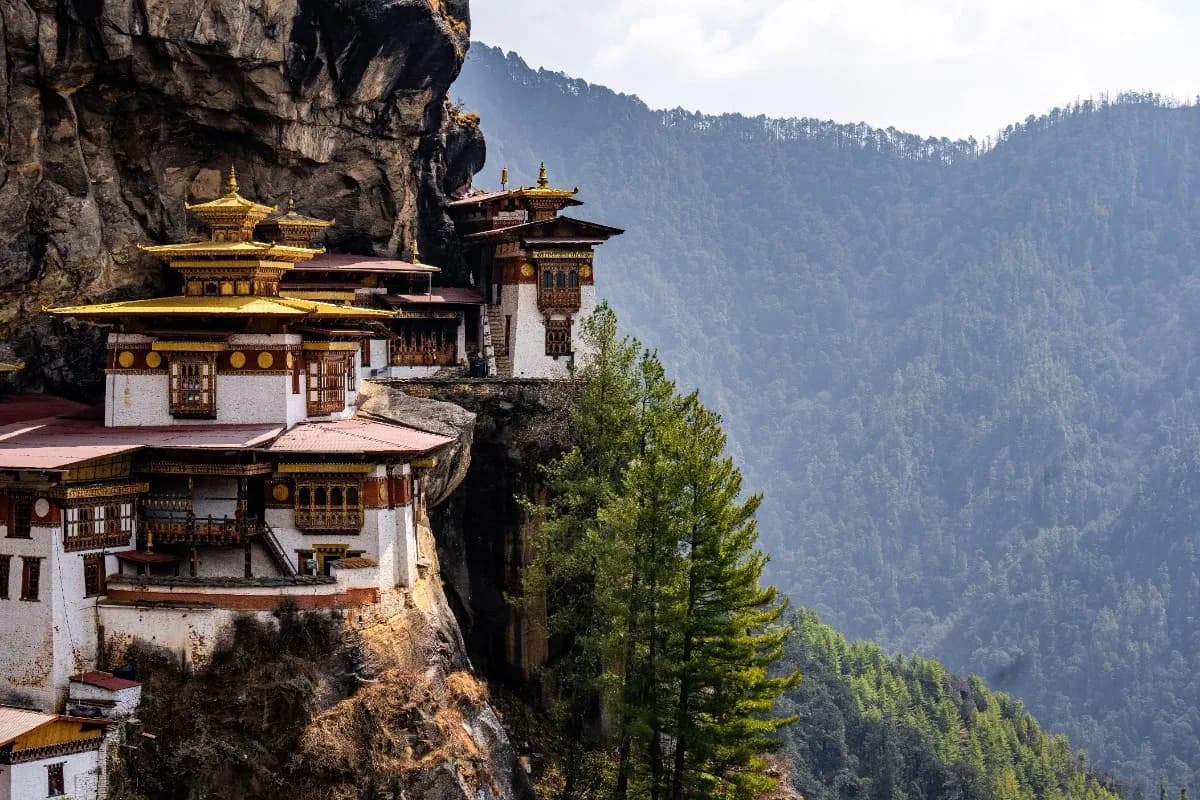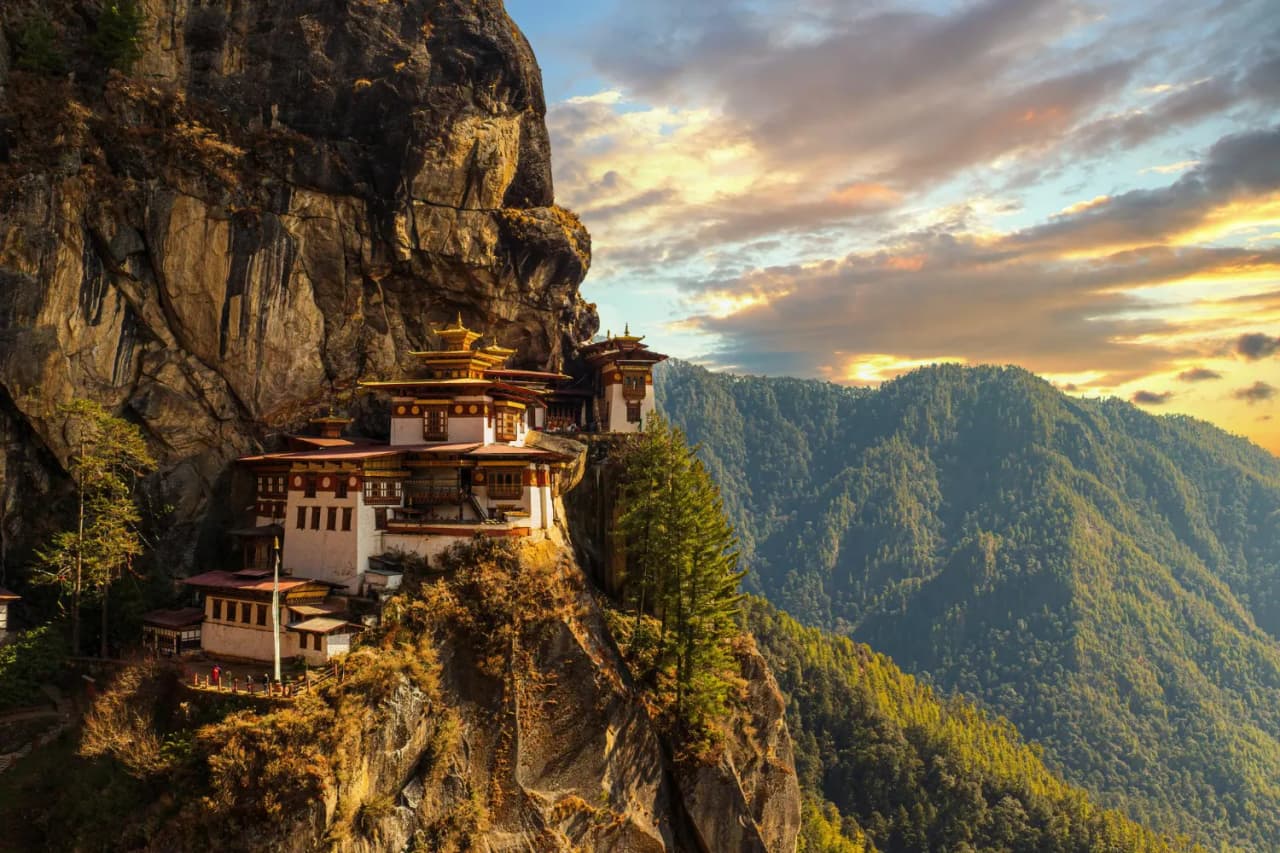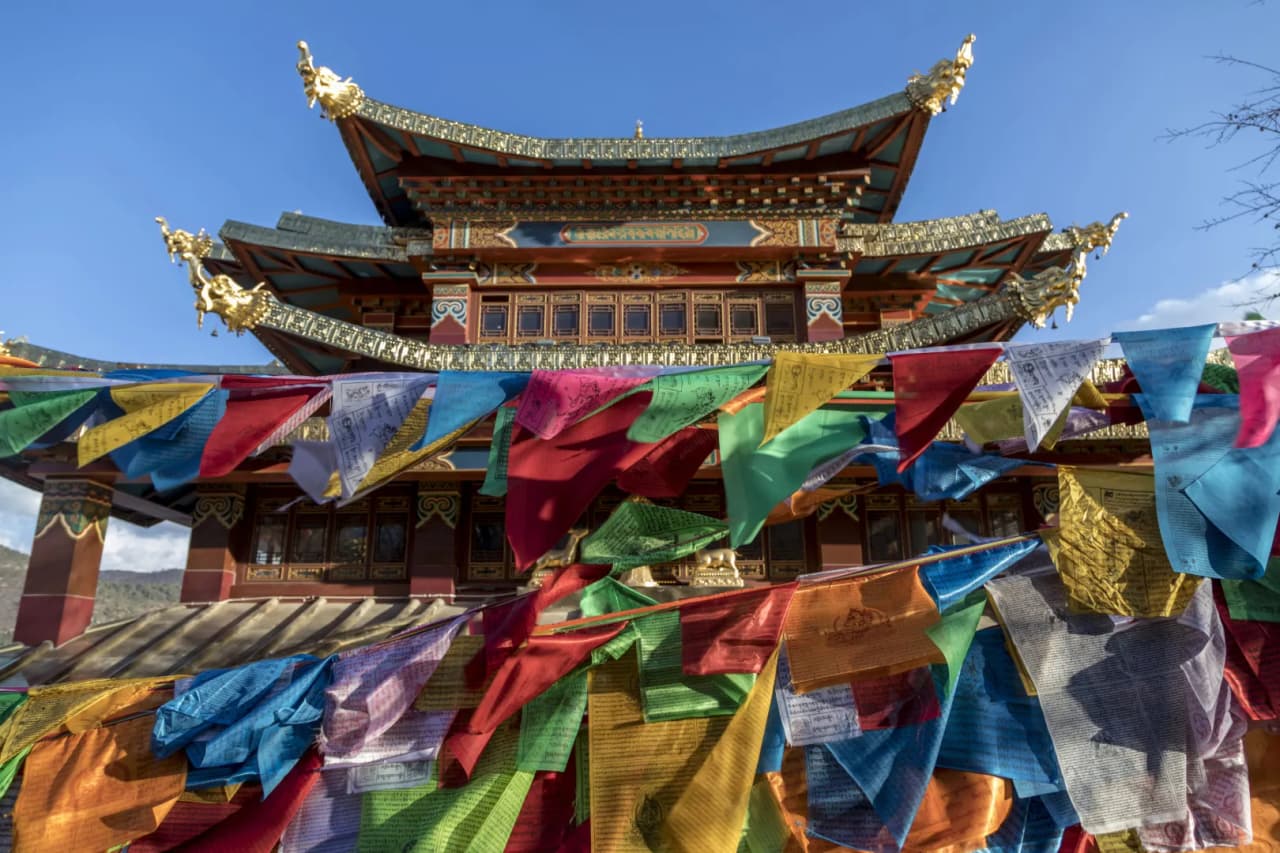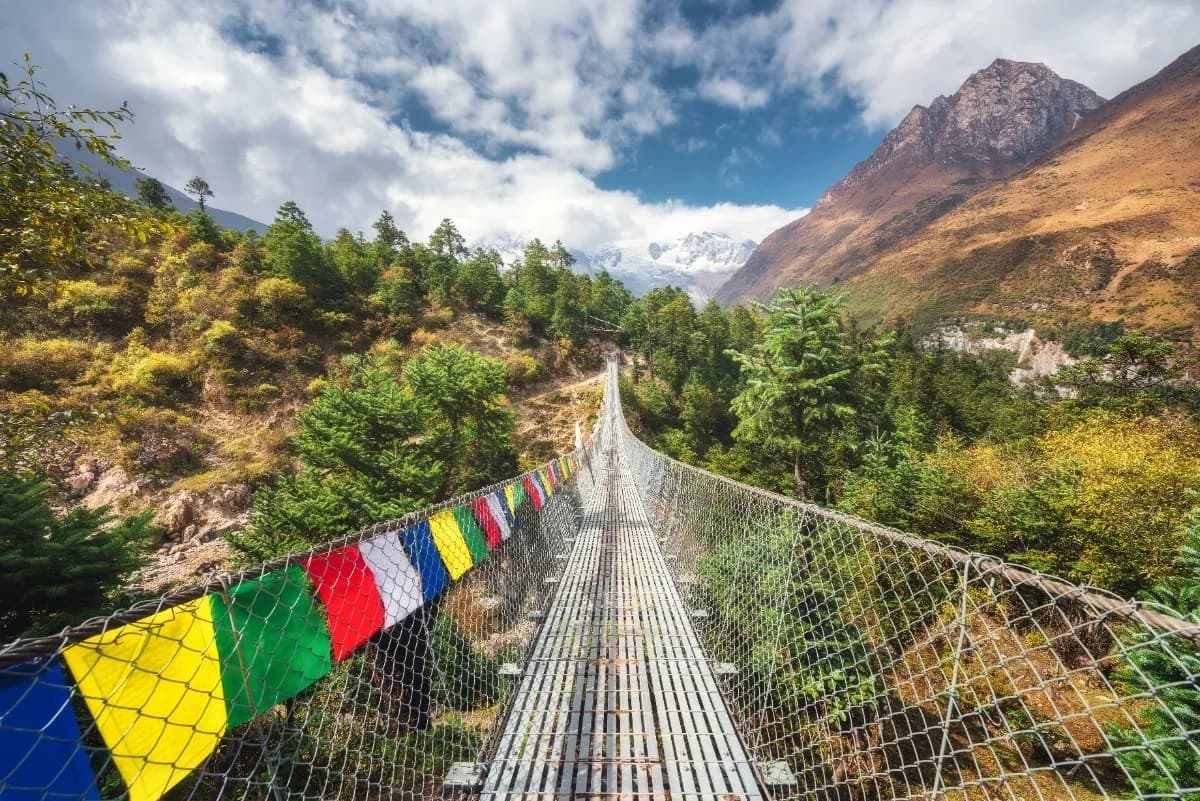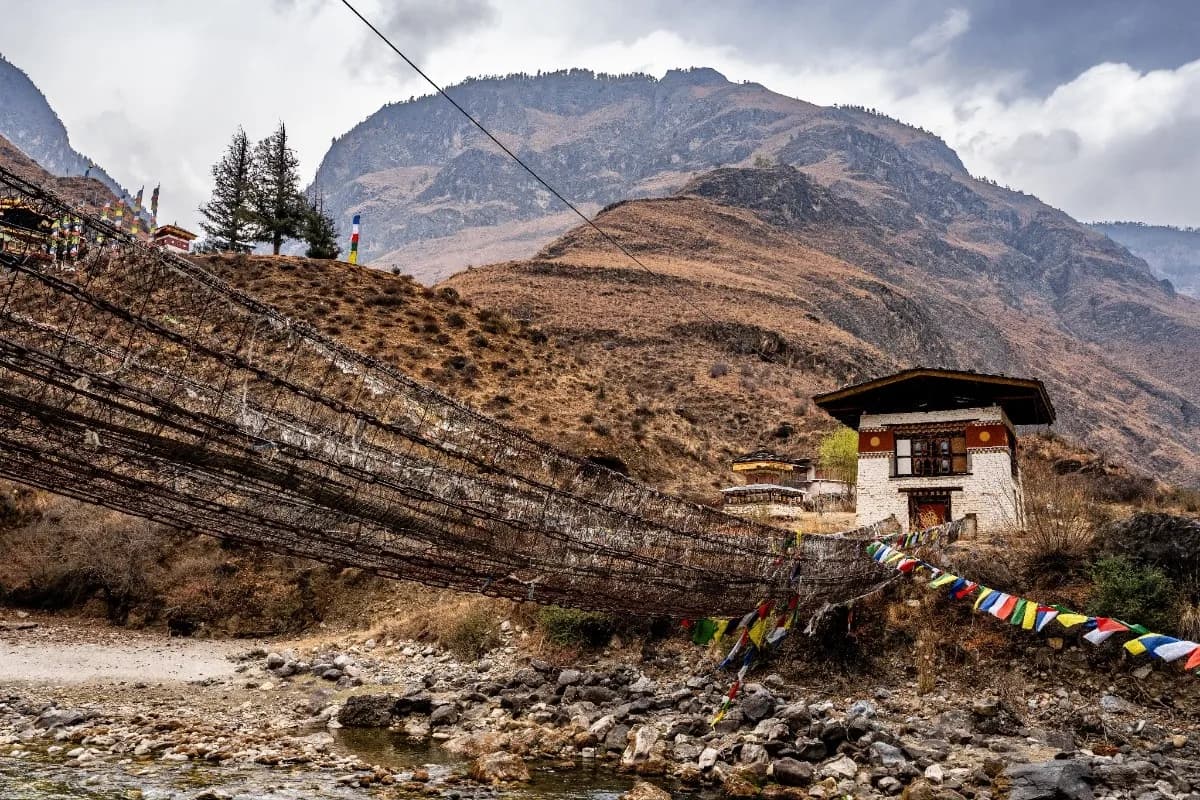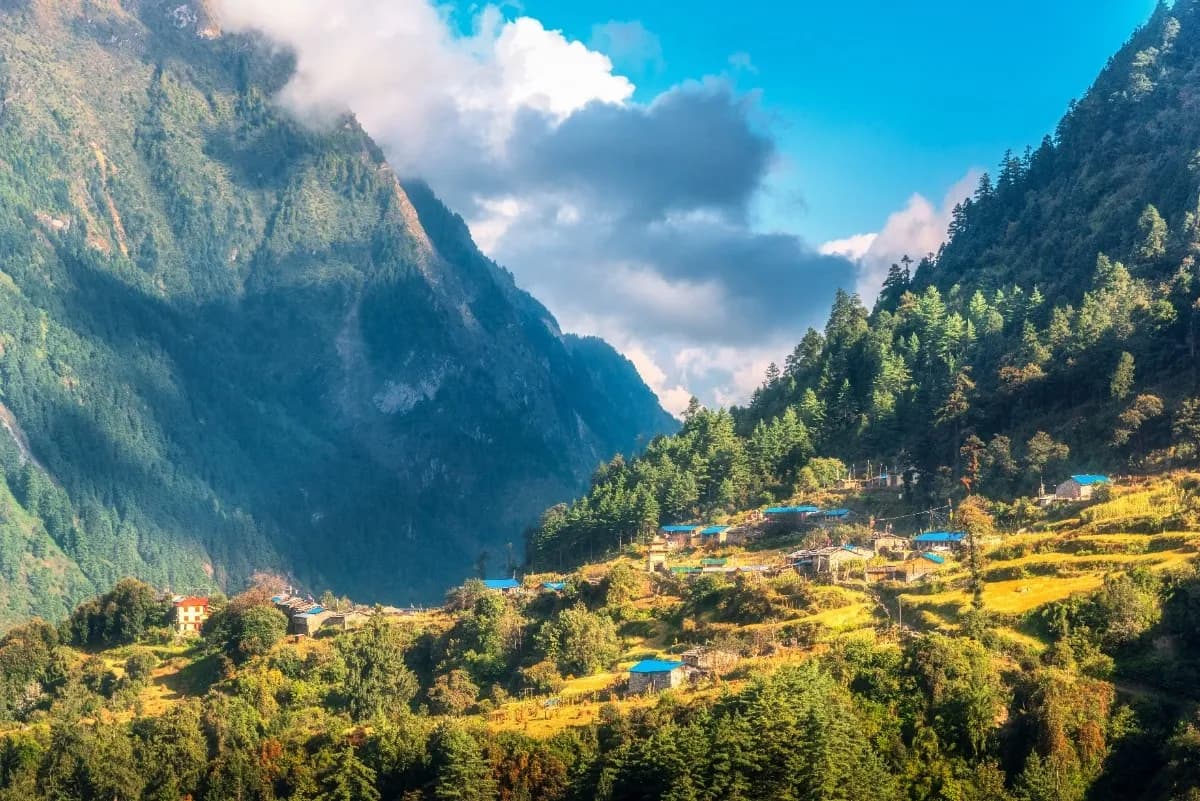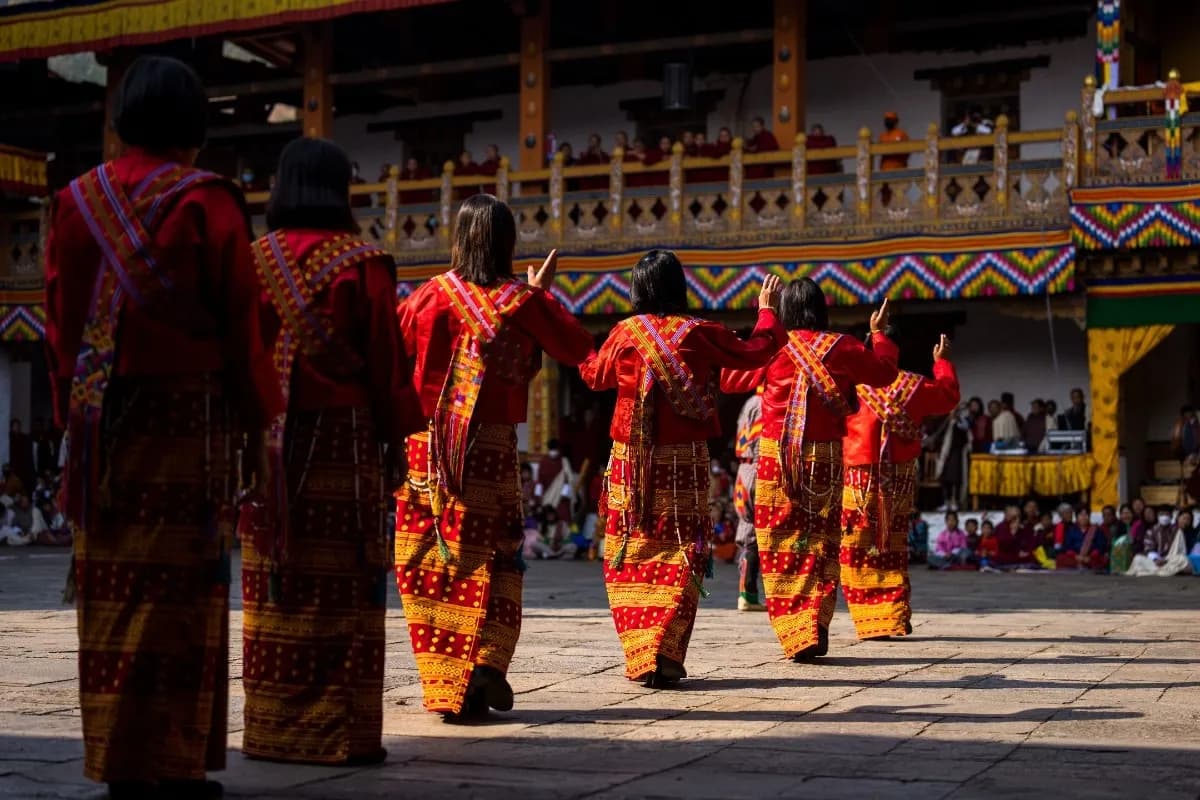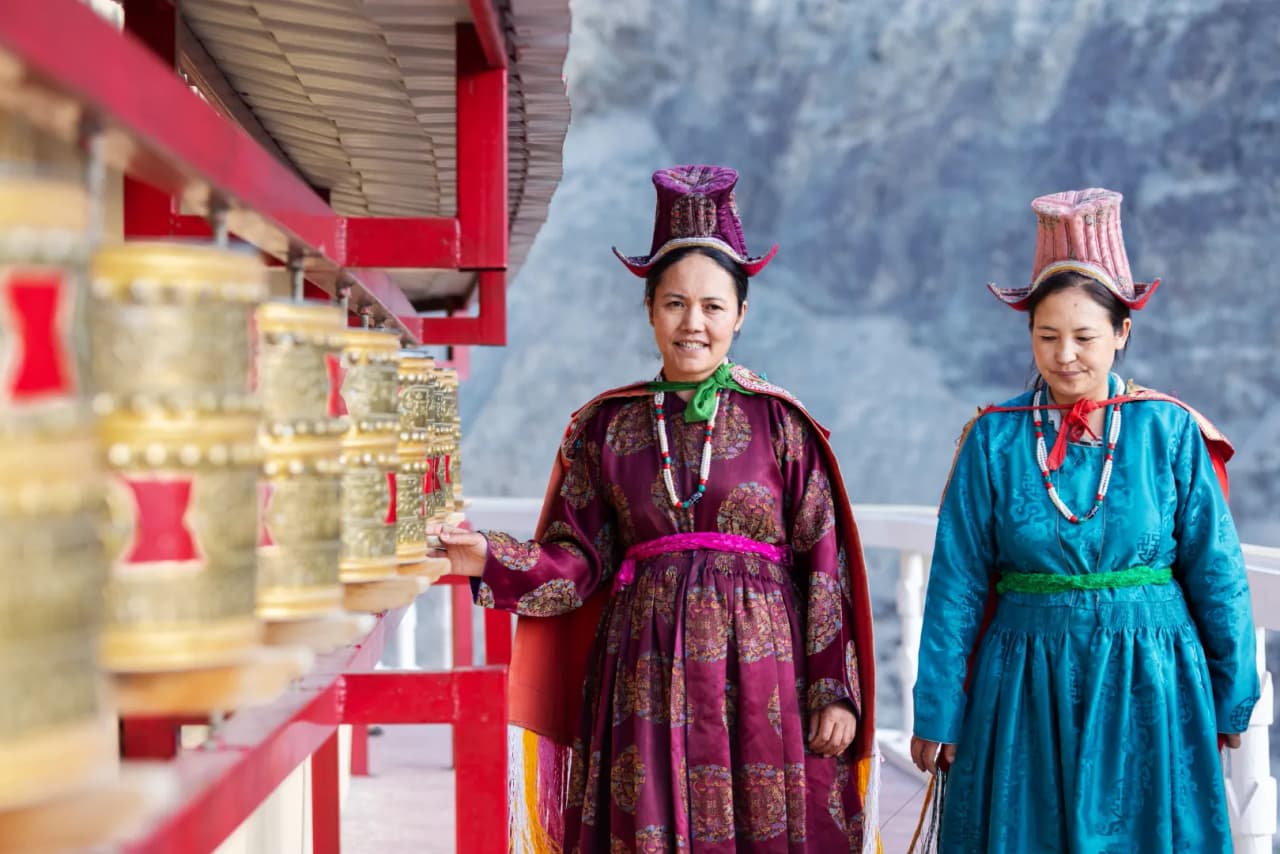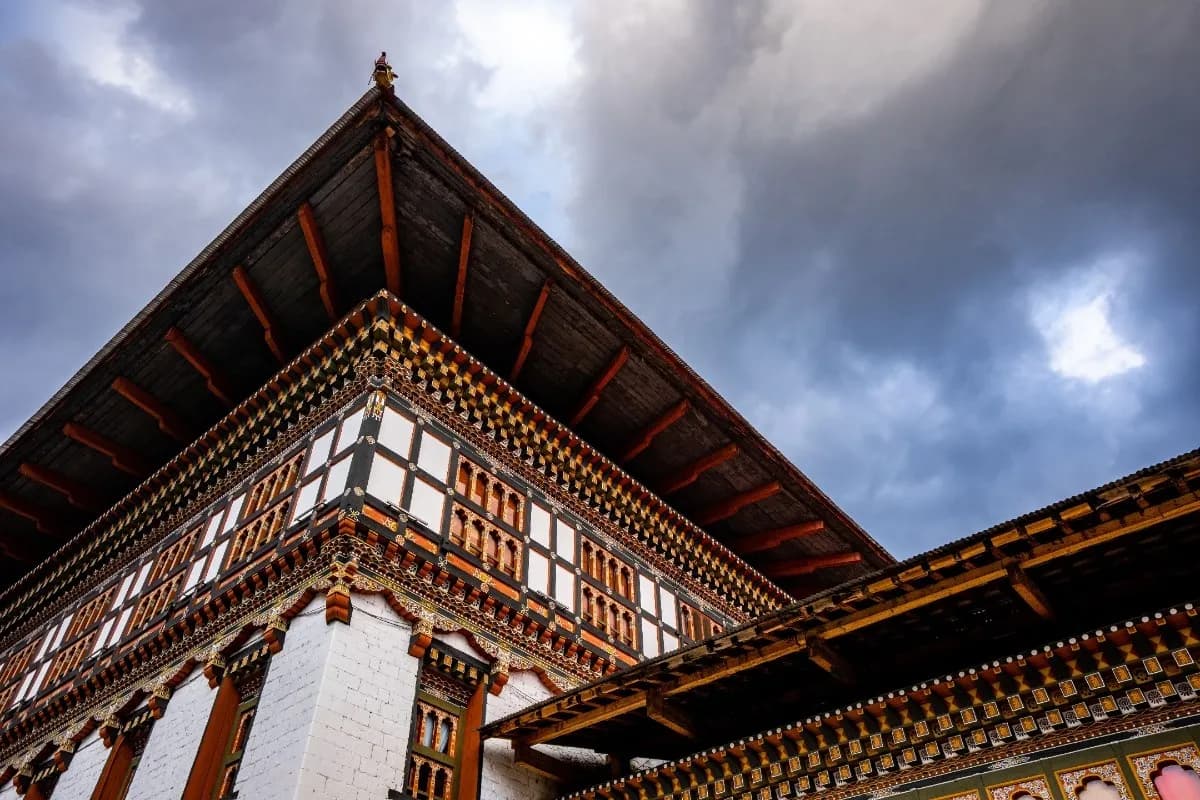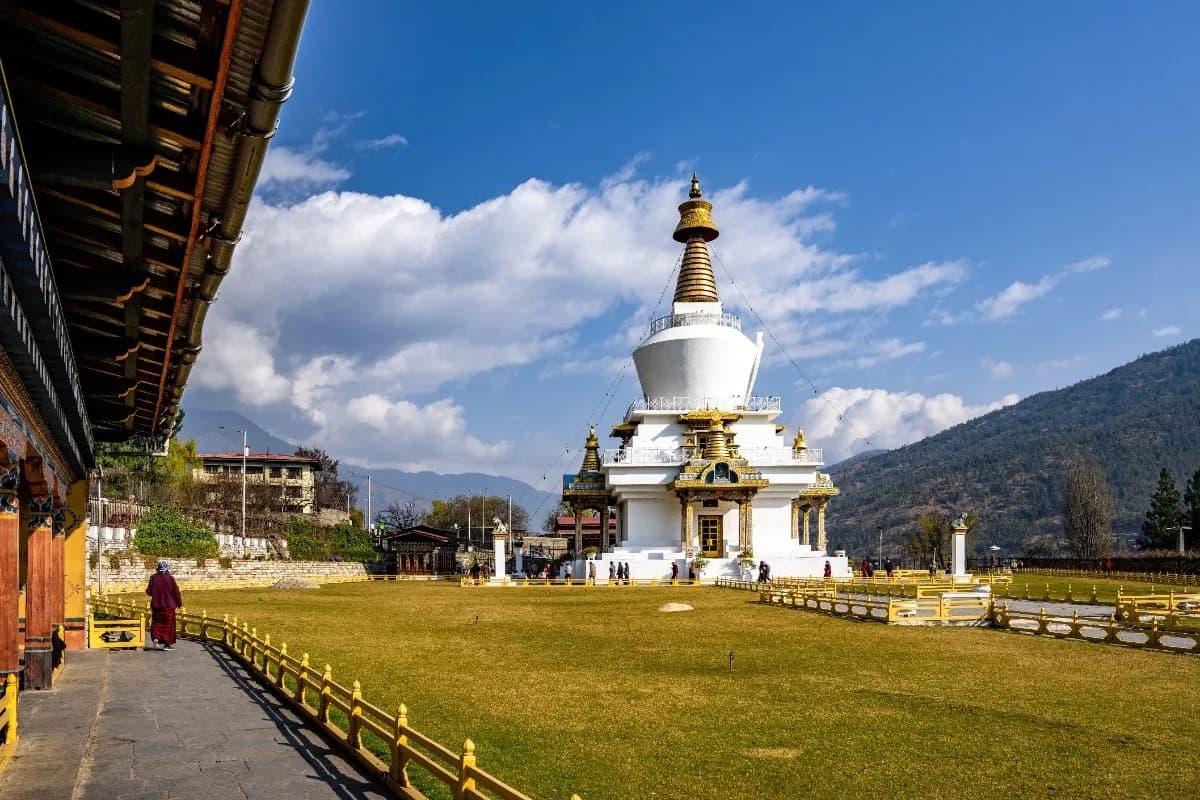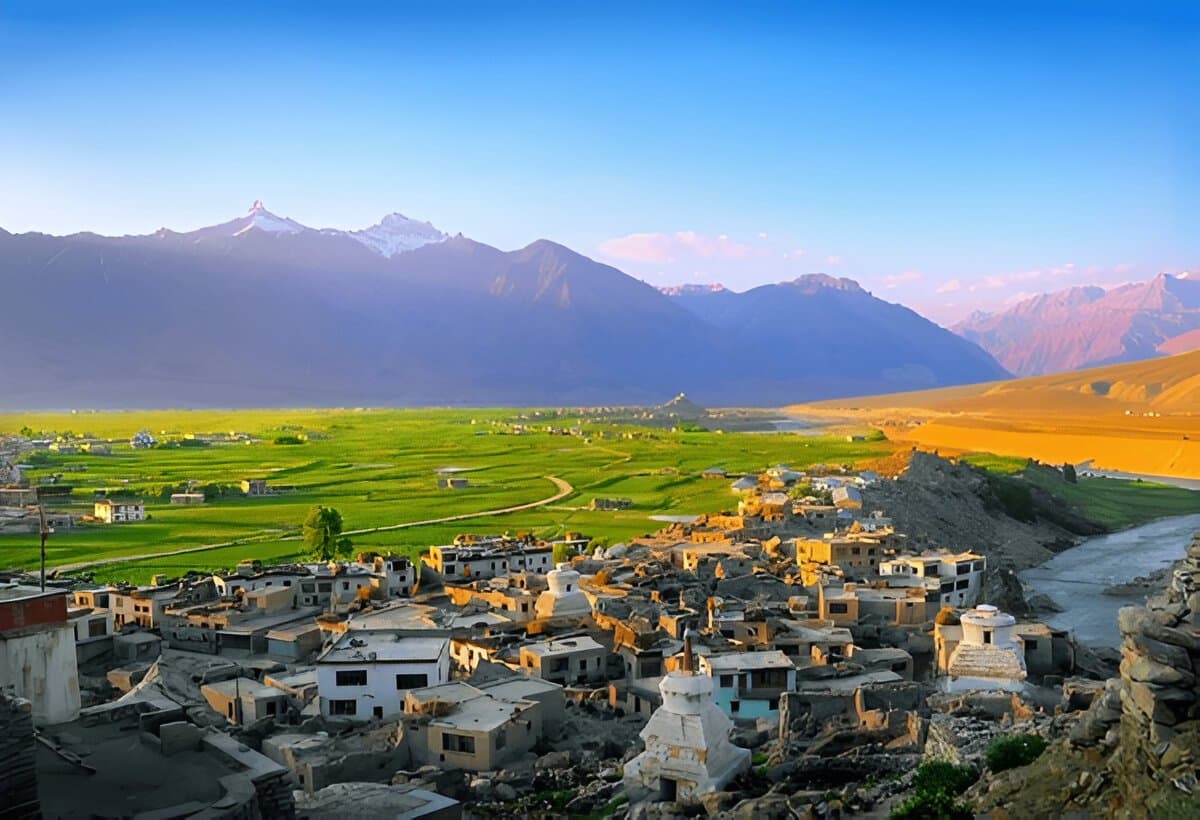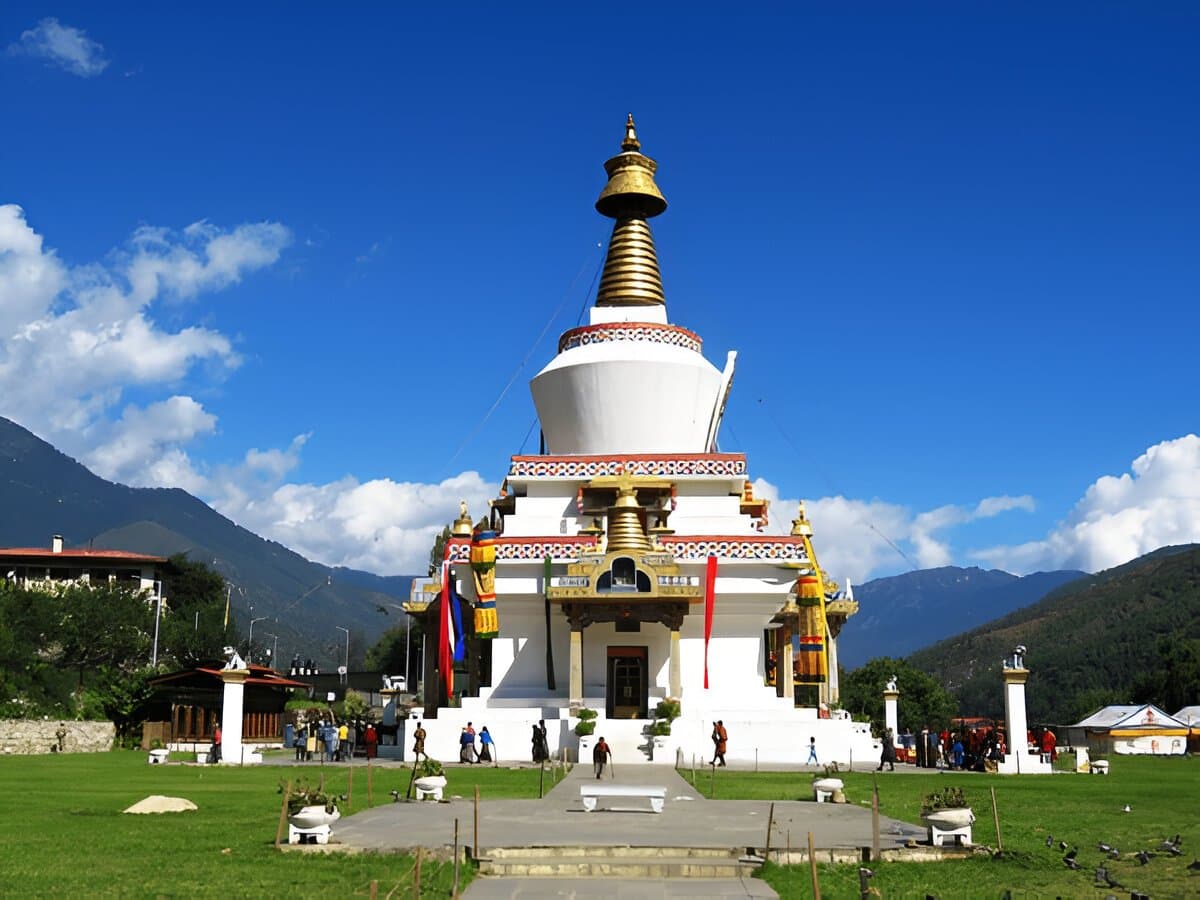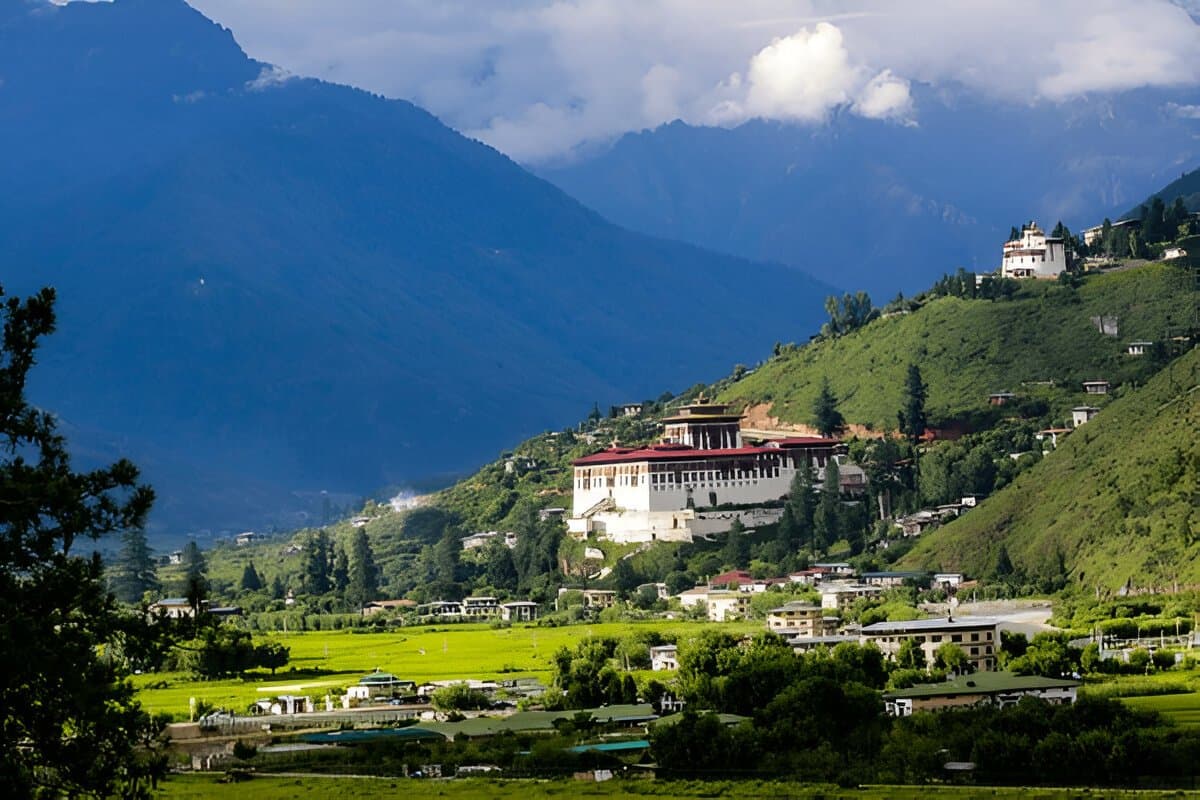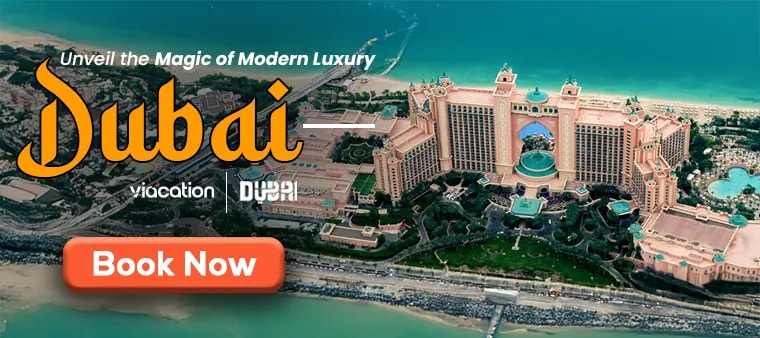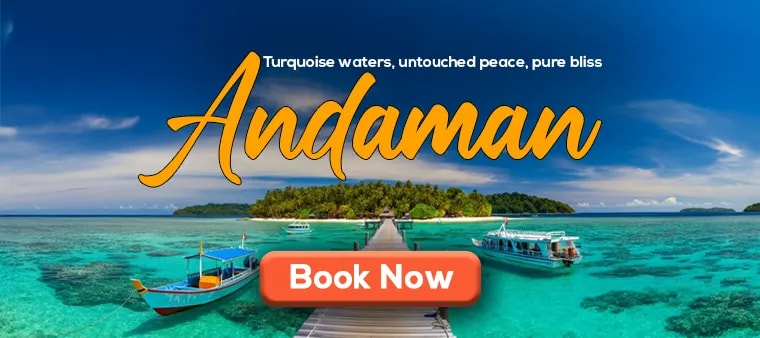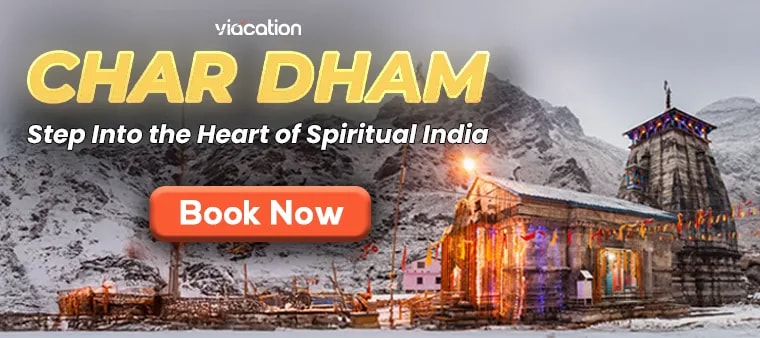Bhutan Tour Packages
Looking to escape into the mountains, monasteries, and magic of the Himalayas? Our expertly crafted Bhutan tour packages are designed to bring you the best of this kingdom, all while keeping your comfort and convenience at the forefront. Whether you're planning a short cultural trip or a week-long immersive experience, we offer a Bhutan trip cost as low as ₹32,999, ranging from 4 nights 5 days to 7 nights 8 days Bhutan trip, made to suit solo travelers, couples, families, and group explorers alike.
Viacation’s Bhutan travel packages include permits, accommodation, transfers, and sightseeing. Exploring Bhutan has never been more accessible for Indian travelers. At Viacation, we specialize in simplifying Bhutan tourism for Indian travelers. Our Bhutan trip packages are experiences filled with spirituality, scenic landscapes, local culture, and unique stays. From helping you get your Bhutan entry permit seamlessly to offering local-guided tours, vegetarian meal options, and emergency assistance, we’ve thought of everything. Plus, our on-ground support in the Bhutan tour ensures your trip is smooth, safe, and memorable.
Viacation believes in providing real value, no hidden costs, no generic itineraries, only honest travel experiences.
You can travel to Bhutan from India via Bagdogra, Siliguri, or Kolkata, as these are the top gateways that connect seamlessly to Phuentsholing, the entry point to Bhutan. Whether you're flying into Paro or crossing by road, Viacation’s packages provide customized departures from major Indian cities like Delhi, Mumbai, Bangalore, Chennai, and Guwahati.
Book our handpicked Bhutan tour packages and let’s explore the land of the Thunder Dragon.
Explore Bhutan Tour Packages from India’s Top Cities: Bhutan packages from Mumbai, Bhutan tour package from Kolkata, Bhutan trip from Delhi, Bhutan tour packages from Ahmedabad, Bhutan tour package from Bangalore.
Explore other popular International Holiday packages: Dubai Tour Packages, Vietnam Tour Packages, Europe Tour Packages, Thailand Tour Packages, Bali Tour Packages, Singapore Tour Packages, Maldives Packages, Nepal Tour Packages, Sri Lanka Tour Packages, Australia Tour Packages, Switzerland Tour Packages, Malaysia Tour Packages, Georgia Tour Packages, Baku Tour Packages.
Why to visit Bhutan?
With no visa required for Indians and easy connectivity, 2025 is the best time to plan your Bhutan vacation. This peaceful Himalayan country is full of beautiful sights and rich culture. Hike to the famous Tiger’s Nest Monastery, standing high on a cliff, and see the stunning riverside Punakha Dzong.
Enjoy mountain views at Dochula Pass and explore the charming capital, Thimphu. Try local dishes like the spicy Ema Datshi, watch colorful masked dances, and learn about Bhutan’s traditions. Visit Chimi Lhakhang, the temple of fertility, and shop for handmade crafts at local markets. Bhutan is small but a creative mix of unforgettable experiences.
Facts About Bhutan
Let’s uncover what makes the Land of the Thunder Dragon a truly magical place to visit.
- Happiest Country in Asia: Bhutan measures success with Gross National Happiness instead of GDP. This positive mindset is felt across the country, offering travellers a soul-soothing experience unlike any other.
- Population & Size: With a population of just around 790,000 (2025), Bhutan is one of the least crowded tourist destinations, offering an uncrowded experience.
- Carbon-Negative Nation: Bhutan absorbs more carbon dioxide than it emits. Eco-conscious travellers love this commitment to sustainable tourism.
- Unique Visa System: While foreign tourists require a daily fee to enter, Indian nationals can enjoy simplified entry, making Bhutan travel highly accessible.
- Traditional Architecture Everywhere: All buildings, even modern hotels, follow traditional Dzong-style architecture, offering postcard-perfect aesthetics.
- Cultural Immersion: Bhutanese culture is deeply rooted in Buddhism, expect colourful festivals, prayer flags, and warm hospitality wherever you go.
- No Traffic Lights: There are no traffic lights in Bhutan’s capital, Thimphu. Policemen in traditional attire direct traffic, an endearing sight for tourists.
Things to Know Before Traveling About Bhutan
Planning your Bhutan trip? Here are essential tips every traveler must know before entering the Land of the Thunder Dragon:
- Indian Passport Validity: Your passport must be valid for at least 6 months from your travel date. Alternatively, a voter ID is also accepted for Indian citizens.
- No Visa for Indians: Indian nationals don’t require a visa. However, a Bhutan entry permit is mandatory, issued at Phuentsholing or Paro on arrival with valid documents.
- Currency Value: The Bhutanese Ngultrum (BTN) is equal to the Indian Rupee (INR). INR is widely accepted, but avoid ₹2000 notes, which may not be usable everywhere.
- Per-Day Sustainable Fee: As of 2025, Indians pay a Sustainable Development Fee (SDF) of ₹1,200 per person/day. Pre-booking packages helps manage this easily.
- Respect Royal Traditions: Avoid touching or pointing at religious artifacts. Always dress modestly at monasteries and dzongs.
- Plastic Ban: Bhutan enforces a strict plastic ban, carry reusable water bottles and bags.
- Drone Restrictions: Drones are not allowed unless you have prior permission from the Bhutanese authorities.
- Network & Connectivity: Bhutan has limited roaming; buy a local SIM (TashiCell or B-Mobile) for better connectivity.
Do We Need a Passport or Visa for the Bhutan Trip?
Indian citizens do not need a visa to travel to Bhutan from India. However, a few essential documents are mandatory for a smooth journey.
Here’s what you need:
- A valid Indian passport (minimum 6-month validity) or a Voter ID card issued by the Election Commission of India
- Passport-sized photographs
- An entry permit (issued at the border or airport)
- No visa fee for Indians
- Permits are required for travel beyond Thimphu and Paro
- Aadhaar is not accepted
- Children must carry a birth certificate and a school ID
Travel formalities are simple, making Bhutan one of the easiest international getaways for Indian travellers.
Best Time to Visit Bhutan
Bhutan is a year-round destination, but the autumn and spring are considered the best times to visit Bhutan, but it also depends on the kind of experience you’re looking for.
- Spring (March to May): Spring is one of the most popular seasons for a Bhutan tour. The weather is pleasantly cool, with temperatures ranging from 12°C to 22°C. This is the ideal time for nature lovers as rhododendrons bloom in full glory, and the valleys are lush green. It’s also the season for the famous Paro Tshechu Festival, attracting travellers from across the globe.
- Summer (June to August): Summer brings the monsoon, and while occasional showers are expected, the landscape turns into a dreamy green paradise. Temperature ranges between 15°C and 25°C. While trekking might be tricky, it’s a peaceful time to explore less-crowded monasteries like Punakha Dzong and enjoy scenic drives. It’s also a great opportunity to grab packages of Bhutan at more affordable prices.
- Autumn (September to November): Autumn is another peak travel season, especially for cultural enthusiasts and trekkers. With crisp mountain air and clear skies, it's perfect for hikes to Tiger’s Nest and other Himalayan trails. Don’t miss the Thimphu Tshechu Festival during this time.
- Winter (December to February): Winter sees temperatures dropping between -1°C to 10°C, especially in higher altitudes. However, western Bhutan, Paro, Thimphu, and Punakha remain accessible and stunning. Snowfall adds beauty to monasteries, and it's the best time to experience Bhutan with fewer crowds.
How to Reach Bhutan
Getting to Bhutan is simpler than ever, making your Bhutan tour smooth from the very beginning.
1. By Air:
Flying is the fastest and most convenient option to reach Bhutan.
- Departure Cities: Delhi, Kolkata, Guwahati, Bagdogra
- Arrival City & Airport: Paro – Paro International Airport (PBH)
- Flight Duration: 1.5 to 2.5 hours (depending on departure city)
- Airlines Operating Direct Flights: Druk Air, Bhutan Airlines
- Connecting Flights Available From: Mumbai, Bangalore, Chennai via Delhi or Kolkata
2. By Road:
Travelers from eastern India can enter Bhutan via the Phuentsholing border (near Jaigaon, West Bengal). It’s ideal for a scenic overland experience. Buses, shared taxis, and private vehicles are commonly used.
3. By Train:
Bhutan doesn’t have a railway network, but nearby Indian railway stations include Hasimara (17 km), New Alipurduar, and New Jalpaiguri. From there, it’s a short road trip to the Bhutan border.
Whether you begin your Bhutan itinerary in Paro or Thimphu, selecting the right entry point ensures a hassle-free and memorable start to your journey.
Popular Destinations to Visit on a Bhutan Tour
1. Paro
Cradled by mountains and wrapped in serenity, Paro is Bhutan's most picturesque town and probably the first one you'll set foot in. Its charm lies in the perfect balance between ancient traditions and nature's grace. Don’t be surprised if you feel an instant sense of peace the moment you arrive.
- Best time to visit: March to May and September to November
- Popular Attractions: Tiger’s Nest Monastery (Taktsang), Paro Dzong, Kyichu
2. Thimphu
Welcome to Thimphu, a capital city with no traffic lights and no chaos, yet full of energy. It’s where old-world monasteries stand alongside modern cafés, and monks scroll Instagram after evening prayers. A stroll through Thimphu is like walking through a living museum with a splash of contemporary cool.
- Best time to visit: March to May and September to November
- Popular Attractions: Buddha Dordenma, Tashichho Dzong, Weekend Market
3. Punakha
The moment you cross the majestic suspension bridge into Punakha, you’ll feel like you’ve entered a postcard. This lush valley, once the capital of Bhutan, is dotted with rice paddies and river confluences. Its iconic dzong is often the highlight of many Bhutan travel packages, and rightfully so.
- Best time to visit: October to April
- Popular Attractions: Punakha Dzong, Chimi Lhakhang (Fertility Temple), Pho Chhu Suspension Bridge
4. Khoma
If Bhutan were a tapestry, Khoma would be the threadwork. Famous for its exquisite handwoven textiles, this village is a hidden gem for those who want to go beyond the usual tourist route. It’s here that Bhutanese heritage is literally woven into every piece of fabric.
- Best time to visit: March to May and September to November
- Popular Attractions: Lhuentse Dzong, Khoma Textile Weaving Workshops, Kushutara Handicrafts
5. Phobjikha Valley
Swap the buzz of cities for the silence of Phobjikha. This high-altitude valley is where endangered black-necked cranes migrate every winter, creating an almost magical atmosphere. A favourite among eco-travellers, Phobjikha is Bhutan’s green soul—gentle, quiet, and endlessly photogenic.
- Best time to visit: October to February
- Popular Attractions: Gangtey Monastery, Crane Festival, Nature Trails through wetlands
6. Laya
Adventure calls loud and clear in Laya. Accessible only via a trek, this remote mountain village offers dramatic landscapes and a glimpse into the lives of the semi-nomadic Layap people. It’s raw, rugged, and often the boldest line on the map in elite Bhutan tourism circuits.
- Best time to visit: April to June and September to November
- Popular Attractions: Laya Village Culture, Snowman Trek route, Local Festivals
7. Dochu La Pass
Pause your journey at Dochu La for a view that stays with you forever. This 3,100m-high pass connects Thimphu to Punakha and offers spectacular Himalayan panoramas on clear days. With 108 memorial chortens lining the ridge, it's a spiritual and scenic stop rolled into one.
- Best time to visit: March to May and October to December
- Popular Attractions: Druk Wangyal Chortens, Himalayan viewpoints, Dochu La Festival
8. Haa Valley
Understated and wildly beautiful, Haa Valley remains untouched by mass tourism. Perfect for slow travel, it’s a place where life moves at the pace of prayer wheels and yak herders greet you with genuine warmth. For many, Haa becomes the most unexpected highlight of their Bhutan journey.
- Best time to visit: May to October
- Popular Attractions: Lhakhang Karpo & Nagpo, Haa Dzong, Chele La Pass
These above listed places of Bhutan tour packages are the heart of Bhutan. Let your Bhutan dream begin right here.
Things to do on Bhutan Tour
Here’s a breakdown for are the top things to do in Bhutan in 2025:
1. Explore the Spiritual Heartland of Bumthang
Known as the “Switzerland of Bhutan,” Bumthang is a valley region full of sacred temples, apple orchards, and peaceful countryside vibes. Visit the Jambay Lhakhang and Kurjey Lhakhang—monasteries that date back to the 7th century. This region is perfect for heritage walks and spiritual detox. Entry to most monasteries is free, though some guided tours may cost around BTN 500 (INR 500) per person.
2. Hike to the Iconic Taktsang Palphug Monastery (Tiger’s Nest, Paro)
The legendary clifftop monastery of Bhutan, Tiger’s Nest. A trip to Bhutan cannot be completed without the hike to Taktsang Monastery, situated on a cliffside 3,000 feet above the Paro Valley. This half-day trek is both a physical and spiritual journey, rewarding you with panoramic views and peaceful prayer halls. There’s a BTN 1000 (INR 1000) entry fee for international tourists. For Indian passport holders, entry is free as of 2025, but subject to local regulations
.
3. Go Rafting in the Mo Chhu River
Adventure lovers, heads up! Bhutan tourism offers more than monasteries. Rafting on the scenic Mo Chhu River in Punakha is a must-try. Surrounded by lush valleys and views of Punakha Dzong, the river offers Grade I and II rapids suitable even for first-timers. A standard rafting experience costs around BTN 3000–4000 (INR 3000–4000) per person, including gear and guide. Best months: March to May and September to November.
4. Experience the Nimalung Tsechu Festival
Held in Bumthang every June or July, the Nimalung Tsechu is a vibrant display of Bhutanese culture. Monks in colorful costumes perform cham dances, and locals gather in traditional attire. The festival is free to attend, but it’s best enjoyed with a local guide (approx. BTN 1000–1500/day). Add this to your Bhutan holiday packages if you love photography, culture, and authentic experiences.
5. Visit the Majestic Rinpung Dzong (Paro)
This 17th-century fortress is one of Bhutan’s most photographed sites. With beautiful courtyards, murals, and sweeping views of Paro, Rinpung Dzong is both a functional monastery and a cultural museum. Entry is free for Indian nationals. Visit during the Paro Tsechu festival in spring to witness traditional mask dances and royal processions.
6. Unwind with Hot Spring Therapy (Gasa Tshachu)
Tired from hiking and sightseeing? Enjoy the splashes of the healing waters of Gasa Tshachu hot springs, known for their medicinal properties. Located in northwestern Bhutan, these thermal baths are surrounded by pine forests. There's a BTN 50–100 (INR 50–100) charge for usage. Locals believe that it is best for joint pains and relaxation, perfect to end your Bhutan trip.
These handpicked experiences reflect the essence of Bhutan tourism. Our experts can craft a Bhutan itinerary at a price that suits your budget.
Experience Festivals of Bhutan
If you're planning to travel to Bhutan from India, experiencing one of these festivals will make your journey truly unforgettable. Here are 6 of the most iconic celebrations to time your trip around:
1. Paro Tshechu
Held in the Paro Dzong, this is one of Bhutan’s biggest and most popular festivals. Locals dress in their finest traditional attire, and monks perform sacred mask dances believed to cleanse bad karma. The unfurling of the giant Thangka (religious scroll) at dawn on the final day is a sight you’ll never forget.
When: March/April (2025 Dates: April 10–14, Tentative)
2. Thimphu Tshechu
Celebrated in the capital, this festival is a perfect display of spirituality and social gathering. With lively music, dance forms, and grand parades, Thimphu Tshechu brings thousands of Bhutanese together. It’s ideal for travelers wanting to dive deep into Bhutanese traditions without venturing far from modern comforts.
When: September (2025 Dates: Sept 7–9, Tentative)
3. Jambay Lhakhang Drup
Hosted at one of Bhutan’s oldest temples in Bumthang, this festival is famous for its fire ceremony and the mysterious naked dance performed at midnight. It’s a spiritual affair filled with symbolism, mysticism, and intense devotion.
When: October/November (2025 Dates: Oct 31–Nov 3, Tentative)
4. Punakha Drubchen
A historical reenactment like no other! Locals dress as ancient warriors to reenact Bhutan’s 17th-century battles against Tibetan invaders. It’s a unique mix of drama, heritage, and patriotic pride; all history lovers booking Bhutan tour packages should definitely add it to their list.
When: February (2025 Dates: Feb 20–23, Tentative)
5. Haa Summer Festival
Off the beaten path, this festival offers a more rustic experience. Celebrate Bhutanese nomadic culture with yak herding demonstrations, folk songs, archery competitions, and delicious local food. It’s authentic, raw, and deeply immersive.
When: July (2025 Dates: July 12–13, Tentative)
6. Matsutake Mushroom Festival
Held in Ura Valley, Bumthang, this fun-filled celebration is all about foraging, feasting, and folk traditions. Join locals as they hunt for prized mushrooms and cook up mouthwatering Bhutanese delicacies.
When: August (2025 Dates: Aug 23–24, Tentative)
Shopping Places to Visit for Saviour in Bhutan
Here are some must-visit shopping spots where you can explore Bhutanese craftsmanship at its finest:-
1. Norzin Lam Street – Thimphu’s Bustling Marketplace
Right in the heart of Thimphu, Norzin Lam is a vibrant street lined with handicraft shops, local boutiques, and traditional garment stores. It’s ideal for first-time buyers looking for authentic Bhutanese treasures in a single stretch.
Things to buy:
- Handwoven scarves (Yathra)
- Buddhist prayer flags
- Bhutanese jewellery
- Local wooden masks
2. Centenary Farmers Market – For Organic & Artisanal Finds
Open from Friday to Sunday, this market near the Wang Chhu River is a delight for those who love mixing food with culture. While mostly known for fresh produce, the upper floor features stalls selling herbal teas and handmade trinkets.
Things to buy:
- Dried yak cheese
- Red rice
- Herbal incense
- Organic honey
3. Craft Bazaar – Authentic & Community-Supported
A short walk from Norzin Lam, this bazaar supports rural communities by offering space for them to sell directly. It’s colorful, lively, and filled with handcrafted wonders to make your Bhutan travel memorable.
Things to buy:
- Woolen carpets
- Bamboo utensils
- Paper crafts
- Bhutanese dolls
4. National Handicrafts Emporium – Government-Run & Authentic
Located in Thimphu, this emporium supports local artisans across Bhutan. If you’re eyeing certified handmade products, this is your go-to spot—no haggling, just pure Bhutanese craftsmanship.
Things to buy:
- Thanka paintings
- Cane and bamboo items
- Traditional boots (Tshoglham)
- Wall hangings
5. Lunga Handicraft – A Gem in Paro
Located near Paro Dzong, this family-run store has a curated collection of traditional textiles and locally sourced items. Every product has a story behind it, so its perfect for meaningful gifting.
Things to buy:
- Hand-stitched bags
- Bhutanese paintings
- Natural soaps
- Embroidered bookmarks
6. Yarkay Central Mall – Modern Bhutanese Souvenirs
Located in Thimphu, this upscale mall is great for travelers who prefer modern shopping environments with traditional products. Here, you can find stuff from many different countries like China, Nepal, Bangkok, and Bangladesh.
Things to buy:
- Bhutanese print stationery
- Artistic home decor
- Gift packs with local snacks
- Craft beer
Explore other popular Domestic Holiday Packages: Manali Tour Packages, Goa Tour Packages, Kerala Tour Packages, Andaman Tour Packages, Lakshadweep Packages, Rajasthan Tour Packages, Himachal Pradesh Tour Packages, North East Tour Packages, Kashmir Tour Packages, Leh Ladakh Tour Packages, Spiti Valley Packages, Chardham Yatra Packages, Odisha Tour Packages, Karnataka Tour Packages, Uttar Pradesh Tour Packages.
Popular Packages


Why Book Packages with Viacation?

Trusted by 1,00,000+ travellers

Dedicated experts to plan your trips

Secure bookings, clear cancellations
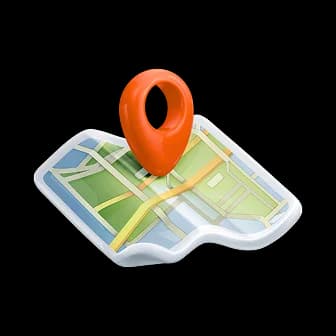
10,000+ unique trips to choose from
More Bhutan Packages
The average Bhutan trip cost for Indian travelers starts from ₹25,000 for a 4-day budget tour and can go up to ₹80,000 for luxury packages. It depends on hotel category, duration, transport, and activities included.


